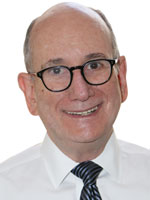January 6 U.S. Capitol riots
The facts reveal an unexpected truth
As we complete the first three months of the Biden administration, many things are different from the previous administration. To me, the most obvious is that this President has said “everything the White House does will be grounded in science, facts and the truth.”
This is welcome news to trial lawyers who know that every trier of fact in any action or proceeding to decide upon evidence, administers an oath asking: “Do you solemnly state, under penalty of perjury, that the evidence that you shall give in this issue (or matter) shall be the truth, the whole truth, and nothing but the truth?”
In these complicated times, though, arriving at the truth can be difficult, even when the facts are clear. Even worse, for some people the facts do not matter. They have already decided what is true even before they hear the facts. We often describe those opposed to our positions this way, but I admit that sometimes I am guilty of this and I imagine that most readers of this column can say the same.
Every trial lawyer and every jury consultant has experienced this when they select a jury. Their challenge is to identify and deal with the jurors who only accept things they already believe. The psychological term for this is confirmation bias or “the tendency to search for, interpret, favor, and recall information in a way that confirms or supports one’s prior beliefs or values.”
This behavior can also be explained by cognitive scientist George Lakoff when he talks about frames. Lakoff says that “frames “are mental structures that shape the way we see the world. He says that frames are established in the synapses of our brains, and once the frame is established and facts are introduced, when the facts do not fit the frame, the frame stays, and the facts go.
I thought about this recently when I read an article about the events of January 6, the day a mob stormed the U.S. Capitol determined to overturn the results of the Presidential election and in effect, overthrow the government.
Most of us are still shaken when we see the videos of the insurrectionists rampaging through the Halls of Congress. It was a dark day in our nation’s history.
The article I read, however, was not about the attack on our government. The article was about who the insurrectionists were, and the facts reveal a truth I did not expect.
If you are like me, you do not need data to confirm that the rioters were extreme militants and right-wing militia groups. We saw that with our own eyes. They looked the part, wearing military garb and carrying flags and symbols of various militant organizations.
The article, however, came to a different conclusion. Using irrefutable data, the article reports that the people responsible for the insurrection were not who we thought they were, and this makes the events of January 6 even more dangerous and disturbing.
The article is entitled The Capitol Rioters Aren’t Like Other Extremists and it was published in February on the website of The Atlantic. It was written by Robert Pape, a University of Chicago political science professor specializing in international security affairs. Pape is Director of the Chicago Project on Security and Threats, a fully staffed research center that studies acts of political violence.
The Center has spent the last three months studying public records and law enforcement interviews of the 290 people that were arrested by the FBI, Capitol Police and Washington, D.C., and charged with being inside the Capitol building or with breaking through barriers to enter the Capitol grounds.
While the media was quick to attribute the insurrection to far-right militants, the data shows otherwise. Pape says “it is important to know who stormed the capitol. If we are going to build viable solutions for America, we can’t just make knee-jerk assumptions.”
Here are some of the Center’s findings:
Nearly 90 percent of those arrested are not affiliated with any known militant organization.Only 12 percent came from militant gangs or militias like the Proud Boys, Oath Keepers or Three Percenters.91 percent of the rioters are employed.41 percent are business owners or hold white-collar jobs.The average age is 40, and two-thirds are 35 or older.Rioters came from 42 different states and 54% came from counties that Joe Biden won including in San Francisco, Dallas, New York, and Los Angeles.
Pape and his team conclude that the rioters were not just right-wing militant organizations but were part of a broader mass political movement with violence at its core.
If you are like me, this is surprising and disturbing. Yes, right-wing militia groups are dangerous and frightening, but the fact that most of the January 6 rioters were part of a national, broad-based political movement is even worse.
Just as trial lawyers tell prospective jurors, we need to accept the evidence, even if it reveals a truth we did not anticipate. If we do not, we will never develop long-term solutions to what occurred on January 6.
Stuart Zanville

Stuart Zanville is the Executive Director of the Consumer Attorneys Association of Los Angeles (CAALA). Contact him at (213) 487-1212 or by e-mail: stuart@caala.org.
Endnote
January 6 U.S. Capitol riots
Copyright ©
2025
by the author.
For reprint permission, contact the publisher: Advocate Magazine
